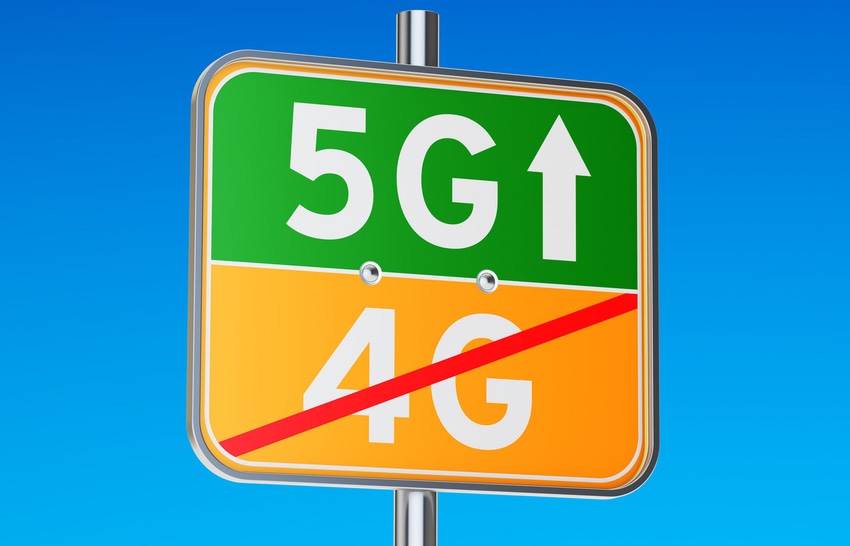At present, service providers face the challenge of supporting numerous and diverse applications on crowded networks – network slicing will alleviate this pressure.
November 20, 2017

Telecoms.com periodically invites third parties to share their views on the industry’s most pressing issues. In this piece Li-Ke Huang, Research and Technology Director at Cobham Wireless stresses the importance of network slicing for all this 5G hype to have any chance of delivering.
5G, 5G, 5G… it feels as though we’ve been talking about the next generation of mobile networks forever. 2020 is supposedly going to be the year when we finally see the technology being rolled out. However, research from Gartner suggests that only 3% of the world’s CSPs will have launched 5G by that time.
Ovum’s research suggests that there will be as many as 24 million 5G subscribers by 2021, yet less than 10% of these subscribers will be in Europe. From a regulatory perspective we have a long road ahead of us, as operators and the Government try and coordinate Britain’s 5G future.
The Government has already displayed its commitment to the development of a 5G ecosystem in the UK. Through the Government sponsored, Innovate UK agency, funding is offered to businesses that can develop and explore applications, as well as new business models around key 5G technologies. The aim is to encourage technology and deployment, testbeds and trials to stimulate the development of 5G use cases and business models. The type of projects that can receive funding range from the Internet of Things, mission-critical applications and immersive entertainment applications, to name just a few.
Over the next few years we need to continue working on the supporting technologies that will ensure 5G networks are deployed as quickly and easily as possible. Network slicing is one such building block. The technology will enable operators to easily trial new services and deliver them to market quickly. At present, service providers face the challenge of supporting numerous and diverse applications on crowded networks – network slicing will alleviate this pressure.
Applications such as driverless cars and automated agricultural technology require robust, low latency networks which are very different to the requirements of low-cost, low-power consumption smart meters. Network slicing facilitates this by enabling networks that are customised to meet the needs of each application. Each and every virtual network created through network slicing can be assigned a separate 5G function. This means there can be an independent virtual network for every type of application whether it be agricultural tech, self-driving cars or even a pacemaker.
For instance, a single hospital will place a very varied set of demands on a single network. It is estimated that the global healthcare sector will invest $410 billion in IoT devices, services, and software in 2022, according to a report from the research firm Grand View Research. Virtual patient observation is an example of one of the more basic applications which we expect to see used in the coming years. At the more complex and critical end of the spectrum are applications such as remote robotic surgery. Network slicing would allow for one ‘slice’ of the network to be assigned to virtual patient observation, whilst another could be dedicated to remote robotic surgery, allowing both applications to efficiently use network resources. These two different applications require very different levels of bandwidth, latency and capacity but network slicing will allow both to work simultaneously.
In the future, more devices in more vertical industries will require 5G connectivity. Delivering all of the necessary network demands is costly and complex in a traditional network environment, which also lacks the flexibility to support the introduction and trial of new services.
Network slicing allows a network to be run in a far more cost effective manner. With network slicing, operators are able to analyse each respective ‘slice’ and work out the exact operational costs far more accurately than is possible in the current network model. Operators can then allocate efficiently to each slice. Overall, this will have the effect of increasing profitability by generating more revenue without any increase in costs. Other benefits include cooperative slicing. This involves underutilised segments of the network being used by a second operator; this would be beneficial for both operators as it would not increase CAPEX and would generate revenue from unutilised resources.
5G is going to bring new technologies, services and opportunities to a huge range of different industries. Network slicing will instill confidence in operators and regulators alike as the applications of the future can be trialed in advance of widespread usage. This is the essential building block on which our 5G future will be built on. There is the no doubt that 5G will continue to be one of the hottest topics of 2018 and will no doubt feature prominently at next year’s MWC.
 Li-Ke Huang is the Research & Technology Director at Cobham Wireless, leading the Technology Group and the Algorithms Group, and is responsible for product concept and core technology innovations contributing to the company’s technological and business visions, directions and strategies. He specializes in leading multiple early technology research programs for the TM500 product family, which has been the de facto global standard for 2G, 3G, LTE, 4G, and 5G wireless network technology prototyping and testing, and acquired extensive knowledge on wireless technology R&D and business development cycles. Li-Ke has a BSc in Electronic Engineering from Shenzhen University, and a PhD in signal processing and digital communications from Imperial College London.
Li-Ke Huang is the Research & Technology Director at Cobham Wireless, leading the Technology Group and the Algorithms Group, and is responsible for product concept and core technology innovations contributing to the company’s technological and business visions, directions and strategies. He specializes in leading multiple early technology research programs for the TM500 product family, which has been the de facto global standard for 2G, 3G, LTE, 4G, and 5G wireless network technology prototyping and testing, and acquired extensive knowledge on wireless technology R&D and business development cycles. Li-Ke has a BSc in Electronic Engineering from Shenzhen University, and a PhD in signal processing and digital communications from Imperial College London.
Read more about:
DiscussionAbout the Author(s)
You May Also Like








.png?width=300&auto=webp&quality=80&disable=upscale)


_1.jpg?width=300&auto=webp&quality=80&disable=upscale)


.png?width=800&auto=webp&quality=80&disable=upscale)